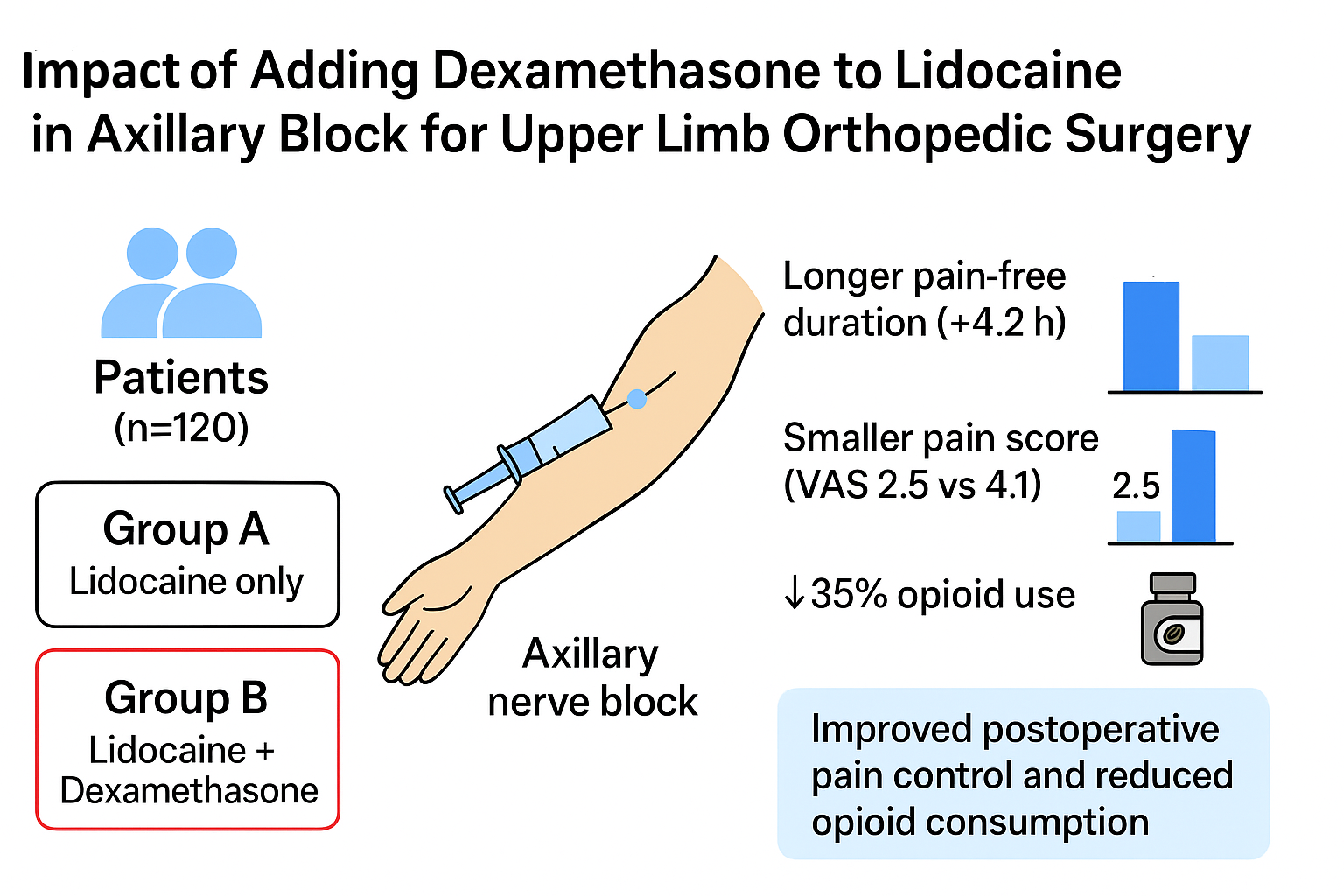BibTeX | RIS | EndNote | Medlars | ProCite | Reference Manager | RefWorks
Send citation to:
URL: http://jmums.mazums.ac.ir/article-1-21944-en.html

 , Alieh Zamani Kiasari
, Alieh Zamani Kiasari 
 , Eisa Nazar
, Eisa Nazar 
 , Mohammadmehdi Marzooghi
, Mohammadmehdi Marzooghi 
 , Keihan Shabankhani
, Keihan Shabankhani 
 , Negar Shirvani Ghadikolaee
, Negar Shirvani Ghadikolaee 

Background and purpose: Upper limb orthopedic surgeries are gaining increasing attention due to the rise in sports activities and the prevalence of chronic conditions. These procedures are often associated with significant postoperative pain, necessitating effective pain management strategies. Peripheral nerve blocks, particularly the Brachial plexus blocks are effective methods for postoperative pain control.
Materials and methods: In this double-blind randomized clinical trial, the effect of adding dexamethasone to lidocaine was compared with lidocaine alone in the axillary block for upper limb orthopedic surgeries. A total of 120 patients were randomly assigned to two groups. The pain-free duration was assessed using the Visual Analog Scale (VAS), along with analgesic consumption. Data were analyzed using ANOVA and Student’s t-test.
Results: The mean age of the patients was 45 ± 12 years, and 60% of the participants were male. The pain-free duration in the dexamethasone plus lidocaine group was, on average, 4.2 ± 1.5 hours longer than in the lidocaine-only group (p < 0.001). The mean VAS pain score during the first 6 hours postoperatively was significantly lower in the dexamethasone plus lidocaine group (2.5 ± 0.8 vs. 4.1 ± 1.2, p = 0.002). Additionally, opioid consumption within the first 24 hours after surgery was reduced by 35% in the dexamethasone group (4.5 ± 2.1 mg vs. 6.9 ± 2.8 mg of morphine, p = 0.01).
Conclusion: This study demonstrates that the addition of dexamethasone to lidocaine in axillary blocks can be an effective strategy for improving postoperative pain management in upper limb orthopedic surgeries. This approach may help reduce opioid consumption and enhance patients’ quality of life.
(Clinical Trials Registry Number: IRCT20170220032676N4)
| Rights and permissions | |
 |
This work is licensed under a Creative Commons Attribution-NonCommercial 4.0 International License. |





